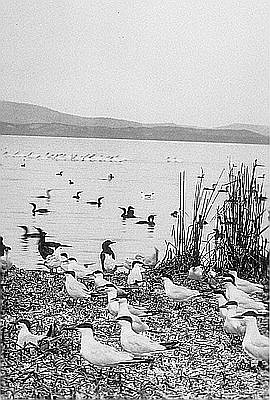The Oregon Journal published this William L. Finley (1876 – 1953) letter, titled “Other Side of Basin Argument,” on December 26, 1940. Finley wrote this piece in response to a December 6th letter by Claude Buchanan, a Corvallis member of the Willamette River Basin Commission, titled “Wildlife Zealots Versus Realists.” According to Buchanan, “Wildlife zealots”(with Finley as their leader) opposed the Willamette River Project because “to them, fishing means more than the prosperity of the farmers.” Furthermore, Buchanan claimed that to Finley, “the preservation of a few spawning beds for the salmon means more than the saving of farm buildings, livestock and the rich soil that is washed away by flood waters.”
By 1940, the retired William L. Finley had earned a reputation as one of the country’s leading wildlife photographers and nature writers. In Oregon, he had also made a name for himself through his work with the Oregon Fish and Game Commission (serving as game warden, state biologist, and commissioner) from 1911 to 1919 and again from 1926 to 1930. During the early years of the Willamette Valley Project, a water resource development scheme carried out by the U.S. Army Corps of Engineers, Finley’s was one of the few voices of opposition carried by the press.
Finley’s main criticisms of the Willamette Valley Project’s seven proposed dams were focused on the potential damages that would befall the river system’s fish populations. From his perspective, dams on the Columbia River (both existing and planned) were already threatening the region’s salmon populations and “the best remaining spawning area is the tributary, the Willamette, which apparently is doomed to go the same route.” Finley publicly denounced the claims by proponents of the project—that the dams were desperately needed to abate flooding in the Willamette Basin—as a disingenuous attempt by special interests “to obtain federal pork monies” for the valley.
Finley also challenged the claims by the project’s boosters that the valley’s farmers were the driving force behind calls for the construction of the seven reservoirs. He publicly asserted that “the farmers and bona fide landowners of the Willamette valley did not start this agitation for flood control and do not want it.” The work of historian William Robbins seems to confirm that Finley may have been correct. Not only did Robbins find “the evidence does not show that farmers enthusiastically supported the Willamette Valley Project,” but he also found that the valley’s business and commercial interests subjected the public “to an unrelenting stream of propaganda through the news media, which gave the illusion of a public consensus favorable to water resource development.”
Further Reading::
Robbins, William G. “The Willamette Valley Project of Oregon: A Study in the Political Economy of Water Resource Development.” Pacific Historical Review 47:4, 1978: 585–605.
Mathewson, Worth. William L. Finley: Pioneer Wildlife Photographer. Corvallis, Oreg., 1986.
Written by Joshua Binus, © Oregon Historical Society, 2006.

